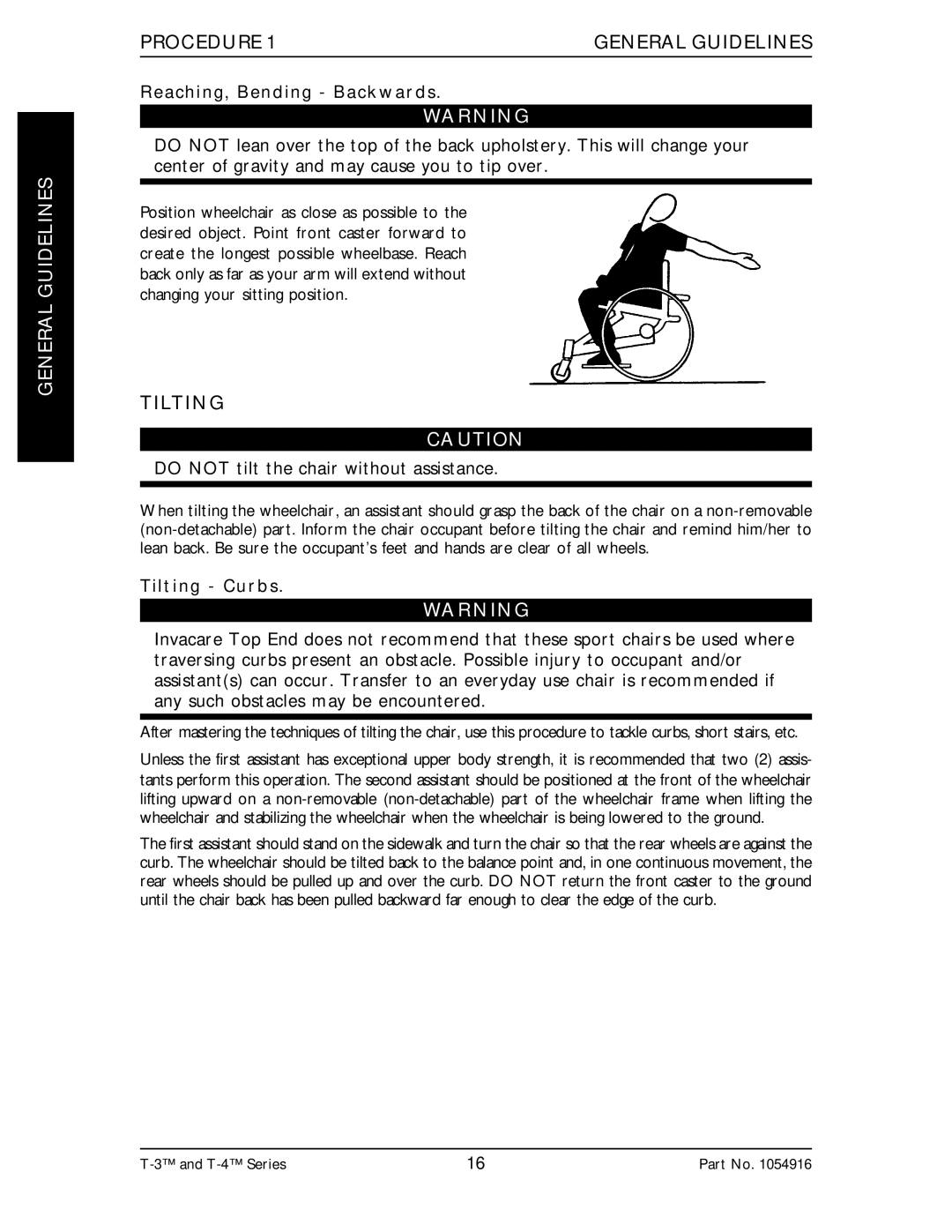
GENERAL GUIDELINES
PROCEDURE 1 | GENERAL GUIDELINES |
|
|
Reaching, Bending - Backwards.
WARNING
DO NOT lean over the top of the back upholstery. This will change your center of gravity and may cause you to tip over.
Position wheelchair as close as possible to the desired object. Point front caster forward to create the longest possible wheelbase. Reach back only as far as your arm will extend without changing your sitting position.
TILTING
CAUTION
DO NOT tilt the chair without assistance.
When tilting the wheelchair, an assistant should grasp the back of the chair on a
Tilting - Curbs.
WARNING
Invacare Top End does not recommend that these sport chairs be used where traversing curbs present an obstacle. Possible injury to occupant and/or assistant(s) can occur. Transfer to an everyday use chair is recommended if any such obstacles may be encountered.
After mastering the techniques of tilting the chair, use this procedure to tackle curbs, short stairs, etc.
Unless the first assistant has exceptional upper body strength, it is recommended that two (2) assis- tants perform this operation. The second assistant should be positioned at the front of the wheelchair lifting upward on a
The first assistant should stand on the sidewalk and turn the chair so that the rear wheels are against the curb. The wheelchair should be tilted back to the balance point and, in one continuous movement, the rear wheels should be pulled up and over the curb. DO NOT return the front caster to the ground until the chair back has been pulled backward far enough to clear the edge of the curb.
16 | Part No. 1054916 |
